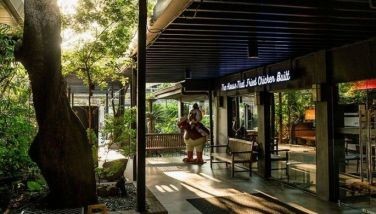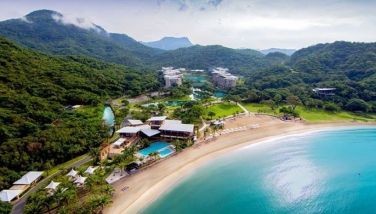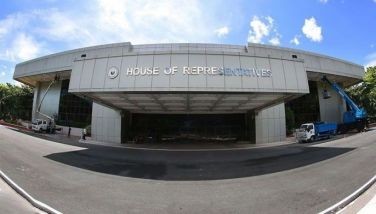What’s in a name?

Bangsi, dibang, himalit and isdang-lawin. They refer to the same species we call flyish fish (Parexocoetus Brachypterus) of the family Exocoetidae. My friend Dhang Tecson of Sinaya Seafood says they repopulate easily and could be the solution to lowering prices of fish and making seafood more accessible.
If we identify these fish that consumers must get to know, we can help our fisherfolk sell “lesser known species” and help them be more sustainable. Why should we just settle for bangus, tilapia and galunggong? There is bisugo, torsilyo and tabagak that the INSPIRE Project of Gerry Roxas Foundation (GRF) assists through C3, an NGO partner. These three come from Roxas, Palawan and are now dried using more sanitary methods, so you can be assured the dried fish are safe to consume. This is knowing your farmer or fisherfolk, and traceability of your food.
We were introduced to tabagak which looks like your regular tuyo or the ubiquitous dried species we are most familiar with. But they call it tabagak. So what’s in a name?
We Filipinos also have different terms for daing. Daing may not necessarily mean just bangus (milkfish). It can be lamayo (marinated but not crisp dried), bulad (Cebuano for dried) or simply tuyo (the general term for dried).
To also increase the popularity of these fish species, we have to teach or encourage people to eat paksiw, sinigang, pesa and pangat. These terms are for cooking fish in vinegar (paksiw), rice broth (sinigang) and plain water but with ginger or tomatoes and onions. I am not a cook, but I have a lot of memories eating fish in many ways. Our Mom would even gut the fish herself and put the innards on our plants! That practice, I found out, is also used in natural farming. Fish entrails have a lot of amino acids and is used in making organic concoctions for plants. She cooked whatever fish they had in Navotas market (a short drive from our ancestral home) or Malabon market (I remember it only opens in the afternoons). Thus, we grew up knowing different fish species and cooked in many ways, all except fish and chips.
My Dad loved to go to market on weekends and would bring home shellfish and crustaceans – so we learned how to eat suahe, sugpo, alamang – all sizes of shrimp. And all sizes of crabs – talangka, alimasag and alimango. To this day, our family lunches center on the “catch of the day,” even if we now live far from Malabon. My brother makes sure we have all kinds of fish and crustaceans on the table – just steamed while fresh, and each of us personalizes the food with our own preferred dipping sauce. Crabs go well with vinegar and ginger while shrimps go well with vinegar and labuyo pepper. Garlic and vinegar is best with another family favorite, inihaw na liempo or grilled pork belly. Mom would never mix one shrimp with the wrong vinegar. Last Sunday I smiled as I glanced at my dipping sauces – all five of them! That’s how Mom taught us. Eat well, uncompromising with her sawsawan or dip. And we have carried it to adulthood, long after she’s gone.
When I recall my childhood, we got exposed to many other kinds of seafood. There is ulang (river prawns) which she or Dad would get from the Bulacan river. There was espada, a swordfish which was almost always just sliced and fried. There was igat (eel) and then there are the fresh water fish which we also got from Bulacan. We learned to eat hito (catfish) , dalag (mudfish) which our staff would never touch. They thought it was “unclean” or too wild for their taste. But I can understand the choice as our staff also sometimes do not eat beef, for whatever reason. We just respect choices, be it for religion or just learned habits and food preferences. But for all of our family, we ate everything. Some of us had an acquired taste for burong dalag or fermented rice with mudfish, which I later found out is a Pampango or Bulakeña favorite.
As we get older, we decide which of our favorites remain as our choice or which we stop eating because they are no longer available in today’s markets.
So when I met Gerry Roxas Foundation’s partners who promote the fishes from Shell Island Fishers Association (SIFA), I was reintroduced to bisugo, tabagak and torsilyo. We were served champorado with tuyo. To me, it looked like regular tuyo, but when I ate it, this one tasted clean and not as over salted as some that I have tried before.
Last week, I got samples to fry – and I had it for Meatless Monday and Fish Friday, two days when I try to eat fish only. I figured, I have to get to know more fish species if I will try to eat more fish.
This time, I got samples because they promote dilis, bisugo, flying fish and squid, all cleanly dried and ready to fry.
Today’s marketers (like Sinaya and SIFA) do one better by vacuum-packing the fish at source. Soon, Dhang Tecson tells me, they will also freeze fish at source, when they get their ice plants up and operational. In the meantime, dried fish and bottled fish are our choices. The operative word is to process at the source. Listen to the podcast where Dhang tells us more about her fish tales. She is my guest in the podcast “Good and Green” airing this month.
For us consumers, we can help control retail prices by choosing a variety of fish. Because if we buy “lesser known” fish, then fisherfolk will be more sustainable as they will not waste their catch. Sadly, unknown species get disposed of or thrown back to sea, never to reach our plates.
Get to know a fish today. And eat more local fish for a sustainable fishing industry.
- Latest
- Trending




























